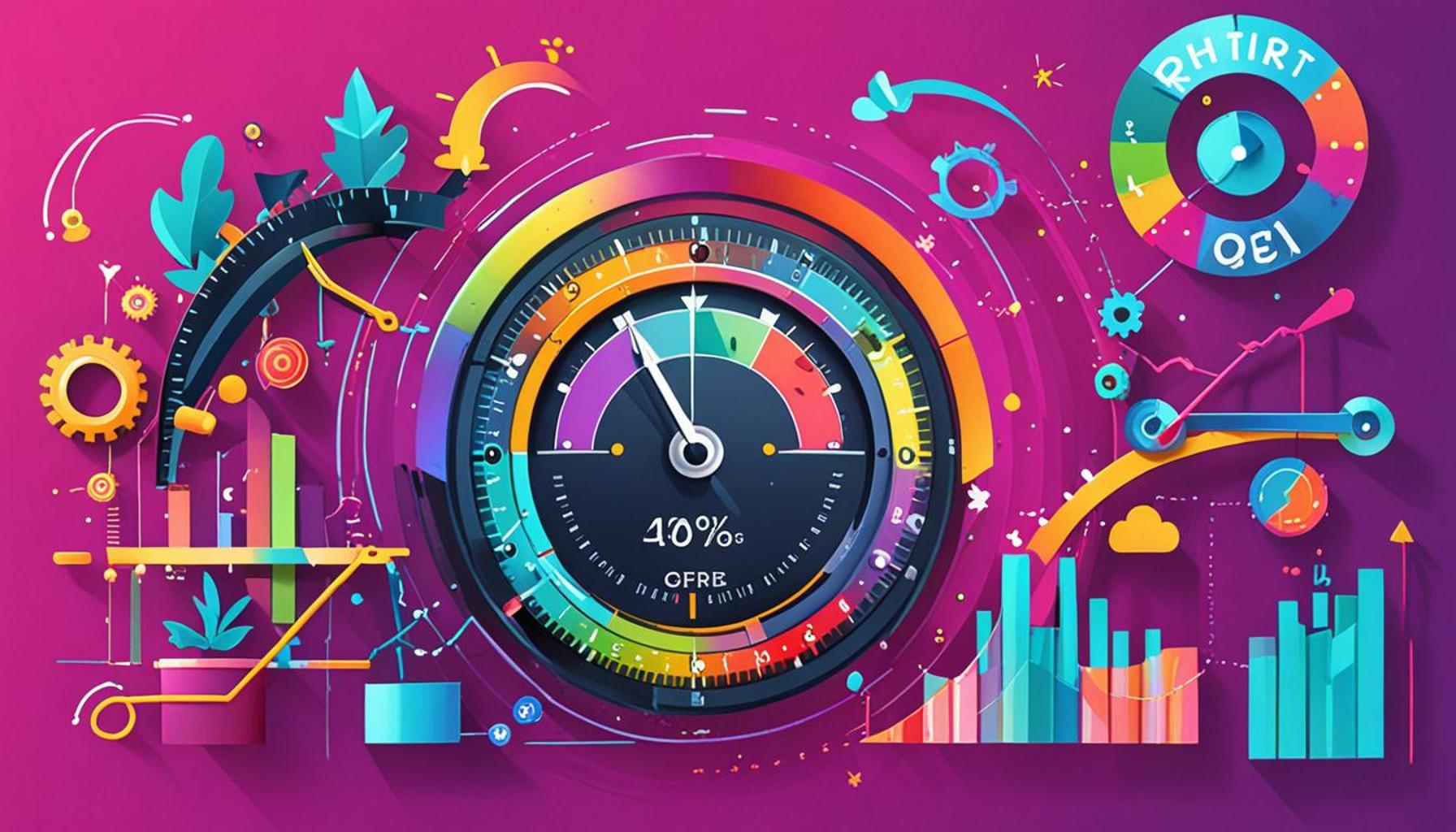How to Measure Return on Investment (ROI) in Marketing Automation Projects

The Importance of Understanding ROI in Marketing Automation
In the fast-paced realm of digital marketing, grasping the concept of Return on Investment (ROI) holds immense significance. With many organizations investing substantial financial resources in marketing automation projects, effectively measuring their success becomes a critical task. Accurate assessment of ROI not only guides budget allocations but also informs the strategic direction for future marketing campaigns, allowing businesses to optimize their resources and maximize returns.
Key Factors in ROI Calculation
To gain a holistic view of ROI in the context of marketing automation, businesses must consider several key factors:
- Cost of the marketing automation tools: The initial investment in software licenses, implementation, and ongoing maintenance fees can vary widely depending on the provider and the complexity of the tools adopted. Organizations need to evaluate these costs against potential revenue generated.
- Time spent on campaign implementation: An often-overlooked aspect is the time investment from the marketing team. Enhanced efficiency through automation can be offset by the hours spent in execution, customization, and monitoring of these campaigns. Identifying time saved can help calculate a more accurate ROI.
- Impact on lead generation and sales: The ultimate goal of any marketing campaign is to drive leads and increase sales. It’s vital to establish metrics that gauge the effectiveness of automation tools in achieving these outcomes, such as conversion rates, customer acquisition costs, and overall sales growth.
Navigating the Challenges of Measuring Value
One of the greatest challenges lies in determining the true value that marketing automation tools contribute to an organization. It’s essential to ask the fundamental question: Are these tools merely streamlining processes, or are they catalyzing substantial revenue growth? The complexity of this evaluation often leads to a deeper exploration of methodologies and metrics designed to provide clarity.
Effective methods for measuring ROI in marketing automation can include advanced tracking systems, detailed analytics, and performance benchmarks. Utilizing case studies of organizations that have successfully implemented marketing automation can offer valuable insights. For instance, a tech startup that integrated automation into its lead nurturing process may report a jump in qualified leads and a notable increase in closed sales, demonstrating clear financial returns on their investment.
Conclusion
As we continue to explore the nuances of measuring ROI in marketing automation projects, it becomes evident that understanding these metrics is essential for making informed decisions. By analyzing the costs, time involved, and the impact on sales, businesses can effectively navigate their marketing strategies and investments. Prepare to delve into detailed methodologies and real-world case studies that illuminate the financial ramifications of your marketing automation efforts. Equipped with this knowledge, organizations can not only optimize their current strategies but also lay the groundwork for future successes in the dynamic digital marketing landscape.
SEE ALSO: Click here to read another article
Strategies for Calculating ROI in Marketing Automation
Measuring Return on Investment (ROI) in marketing automation projects demands careful consideration and a systematic approach. Successful businesses employ a variety of strategies to quantify the effectiveness of their marketing automation efforts, moving beyond simplistic financial assessments to encompass a more comprehensive evaluation. Here are key strategies to accurately measure ROI:
1. Set Clear Objectives
The first step in measuring ROI is to establish clear and measurable objectives for your marketing automation initiatives. Whether it’s increasing lead generation, improving customer engagement, or boosting sales conversions, having defined goals allows organizations to track relevant outcomes. Potential objectives might include:
- Increase in qualified leads: Assessing the volume of leads generated through automation efforts can illuminate the success of lead nurturing campaigns.
- Improved customer retention rates: By automating customer follow-ups and engagement, organizations can analyze retention metrics to evaluate loyalty.
- Higher conversion rates: Understanding the percentage of leads that convert to sales post-automation implementation reveals the effectiveness of the marketing funnel.
2. Utilize Data Analytics Tools
Capitalizing on data analytics tools is essential for measuring ROI in marketing automation. These tools provide insights into customer interactions, campaign performance, and overall marketing effectiveness. By leveraging performance data, businesses can assess various metrics such as:
- Click-through rates (CTR): Analyzing the rate at which recipients engage with emails or landing pages can help evaluate campaign effectiveness.
- Lead scoring: Implementing lead scoring mechanisms enables teams to prioritize leads based on their potential to convert, thus refining sales strategies.
- Campaign ROI: Tracking revenue generated per campaign against the cost incurred can provide a clearer picture of the financial impact.
3. Calculate Overall Cost Savings
Another crucial aspect of measuring marketing automation ROI is to calculate the overall cost savings achieved through automation. With time-consuming tasks automated, organizations can redirect their resources more effectively. Consider factors such as:
- Reduced manual labor: Evaluate how much time your team saves by automating routine marketing tasks, allowing them to focus on higher-value projects.
- Lower marketing costs: By analyzing shifts in marketing expenses post-automation, organizations can ascertain overall budget efficiency.
- Enhanced accuracy: Automation often minimizes errors that could lead to costly repercussions, improving financial outcomes in the long run.
Incorporating these strategies demonstrates a commitment to not only tracking financial returns but also understanding the overall impact of marketing automation initiatives. The right blend of objective setting, data analysis, and cost savings evaluation positions organizations to comprehensively assess their marketing efforts, ultimately steering their future decisions in the right direction. As marketing technologies evolve, so too must the methods for assessing their effectiveness.
Understanding ROI in Marketing Automation
Measuring Return on Investment (ROI) in marketing automation projects is crucial for evaluating the effectiveness and profitability of these initiatives. By understanding the elements that contribute to your ROI, businesses can make informed decisions that enhance their strategic marketing approaches. This involves analyzing both quantitative and qualitative metrics associated with marketing efforts.
Key Metrics to Measure
To effectively gauge ROI in your marketing automation efforts, focus on the following key metrics:1. Lead Generation: Track the number of leads generated through your automated campaigns. An increase in leads directly contributes to potential revenue growth, making it a vital metric. 2. Conversion Rates: Assess the percentage of leads that turn into paying customers. Enhanced conversion rates indicate effective automation strategies, helping to justify your technology investment.3. Customer Acquisition Cost (CAC): Calculate the cost incurred to acquire a new customer. By understanding your CAC in relation to your overall expenditure on marketing automation tools, you can evaluate profitability.4. Lifetime Value (LTV): Consider the projected revenue a customer will generate throughout their relationship with your business. Comparing LTV to CAC provides deeper insights into the long-term financial benefits of your automation projects.5. Churn Rate: Monitoring customer retention rates will help pinpoint the success of customer engagement strategies. A lower churn rate indicates that automation is enhancing customer relationships, a critical factor for ROI.
Real-Life Examples
Organizations that successfully measure ROI can adapt and fine-tune their marketing strategies. For instance, a leading SaaS company implemented an advanced marketing automation platform, which resulted in a 30% increase in lead conversions and a 25% reduction in customer acquisition costs. This fast-paced technological adoption highlights how efficient marketing automation can transform businesses’ operations.By meticulously tracking these metrics and learning from the outcomes, businesses can not only justify their investment in marketing automation but also enhance their future marketing strategies. The direct connection between marketing efforts and financial outcomes is a dynamic that astute businesses can harness to drive growth.
Conclusion
While the specifics of measuring ROI can vary by industry and company size, a consistent approach focusing on key performance indicators ensures that your marketing automation projects yield profitable returns. This is essential for maintaining a competitive edge in the ever-evolving digital landscape.
| Advantages | Description |
|---|---|
| Increased Efficiency | Automates repetitive tasks, freeing up valuable time for marketing teams. |
| Improved Targeting | Enables precise audience segmentation, ensuring messages reach the right people. |
By delving into these advantages, organizations can see how marketing automation can significantly affect their bottom line, encouraging further examination into best practices and strategies for effective implementation.
RECOMMENDED: Check out this similar article
4. Analyze Customer Lifetime Value (CLV)
To fully understand the return on investment from your marketing automation efforts, it’s crucial to integrate an analysis of Customer Lifetime Value (CLV). CLV measures the total revenue a business can reasonably expect from a single customer throughout the entirety of their relationship. By determining CLV, businesses can assess whether their marketing automation strategies are effectively nurturing long-term customer relationships. Important factors to consider include:
- Repeat purchases: Automated campaigns can significantly increase the frequency of repeat purchases. By tracking the average purchase value and the number of purchased items per customer, businesses can gauge the effectiveness of their automated retention strategies.
- Cross-selling and upselling: Marketing automation enables businesses to identify opportunities for cross-selling and upselling. Evaluating the resulting increase in average transaction size can provide insight into automation’s success in deepening customer relations.
- Churn rate: A deeper understanding of how automation impacts customer satisfaction can help reduce churn rates. Regularly evaluating customer feedback can serve as a metric for improvement as well as a gauge for loyalty.
5. Segment Your Audience Effectively
Implementing effective audience segmentation is another dimension of ROI measurement. Marketing automation allows for fine-tuned, targeted campaigns based on user behavior, demographics, and interests. Analyzing how different segments of your audience respond to automation can provide critical insights into what messaging resonates best. Here are factors to focus on:
- Personalization impact: Assess how personalized messages—crafted through automation—affect engagement rates across different segments. Tracking variations in open rates and conversion rates can guide future campaign strategies.
- Behavior-driven campaigns: Evaluate the performance of campaigns tailored to specific customer behaviors (such as cart abandonment emails) versus generic messages.
- Demographic effectiveness: Assess how campaigns perform among various demographics. Understanding which segments yield the highest ROI can direct resource allocation more effectively.
6. Integrate Multi-Channel Metrics
In today’s marketing landscape, consumers interact through multiple channels before making purchase decisions. Effective marketing automation incorporates multi-channel marketing metrics to capture and measure engagement across platforms. Mobilizing data from email, social media, websites, and online ads can provide a holistic view of campaign effectiveness. Consider evaluating:
- Attribution models: Determine which channels contribute most effectively to conversion by implementing attribution models. Understanding the customer journey helps in discerning where to allocate marketing resources.
- Engagement rates per channel: Analyze how engagement varies across different channels. Higher engagement in certain avenues can indicate the effectiveness of the automated campaigns tailored to specific platforms.
- Return on ad spend (ROAS): Tracking revenue generated for every dollar spent on advertising across all channels can deliver precise insights into the effectiveness and profitability of your marketing automation efforts.
These dimensions not only bring to light the tangible and intangible benefits resulting from marketing automation but also allow businesses to make informed, data-driven decisions. By interlinking CLV, audience segmentation, and multi-channel metrics, organizations can refine their strategies and enhance their overall marketing effectiveness. Such a comprehensive approach ensures that measuring ROI in marketing automation ventures remains an evolving and insightful process, vital for sustained success in a competitive landscape.
ADDITIONAL INSIGHTS: Expand your understanding here
Conclusion
In the ever-evolving landscape of digital marketing, understanding how to measure the Return on Investment (ROI) in marketing automation projects is paramount for achieving long-term business success. From analyzing Customer Lifetime Value (CLV) to implementing effective audience segmentation and integrating multi-channel metrics, organizations are equipped with comprehensive tools to gauge the effectiveness of their automated strategies. Each of these components provides unique insights, enabling businesses to adapt and refine their marketing efforts based on real-time data and consumer behavior.
Moreover, emphasizing the importance of personalization and engagement across diverse platforms allows marketers to understand which tactics resonate best with their audiences. By systematically evaluating metrics such as Return on Ad Spend (ROAS) and engagement rates, businesses can fine-tune their approaches to maximize profitability and customer satisfaction.
As marketing automation continues to advance, the significance of measuring ROI will only grow. Organizations that prioritize a data-driven mindset are better positioned to make informed decisions, ultimately enhancing their marketing effectiveness and securing a competitive edge in a crowded marketplace. By continuously exploring innovative measurement techniques and appreciating the interplay between automation strategies and customer relations, businesses can not only track their success but also pave the way for future growth and sustainability.
In conclusion, leveraging these insights and methodologies will not only benefit marketing departments but will also contribute significantly to the overall health and vitality of an organization, forever shifting how businesses approach automation in the digital age.


